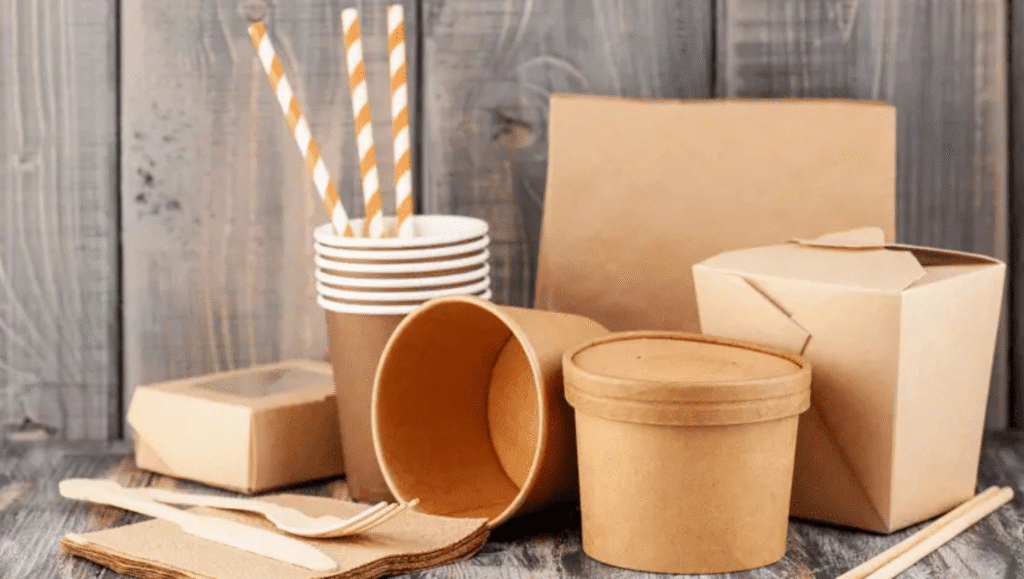
As a surge in food consumption and e-commerce, barrier coatings are revolutionizing food packaging, ensuring freshness, safety, and sustainability. The global food packaging coatings market, valued at USD 3.8 billion in 2024, is projected to reach USD 5.9 billion by 2032 at a 5.7% CAGR, per a 2025 Allied Market Research report.
In India’s ₹90,000 crore packaging industry, these coatings enhance shelf life and recyclability, reshaping how food reaches consumers. Yet, import reliance and regulatory hurdles challenge MSMEs aiming to scale a USD 4 billion domestic market by 2030.
Barrier coatings, ultrathin layers applied to packaging materials like paper, plastic, or biopolymers, block oxygen, moisture, grease, and UV light, extending food shelf life by up to 40%, per a 2024 Journal of Food Science and Technology study.
Unlike traditional multilayer plastics, which hinder recycling, advanced coatings like silicon oxide (SiOx) and water-based acrylics enable metamaterial structures, boosting recyclability by 30%, per a 2025 Packaging World report.
These coatings achieve oxygen transmission rates as low as 0.1 cc/m²/day, rivaling aluminum foil, while supporting India’s booming food delivery sector, per a 2024 CII report.
Innovations are driving this transformation. Graphene-based coatings, pioneered by BASF, cut oxygen permeability by 95% and enhance antimicrobial properties, reducing food spoilage by 25%, per a 2024 ACS Food Science study. Bio-based coatings, derived from chitosan and starch, offer compostable alternatives, aligning with India’s Plastic Waste Management Rules, per a 2025 Food Packaging and Shelf Life report.
Pidilite’s water-based coatings, launched in March 2025, enable grease-resistant paper packaging for quick-service restaurants, cutting plastic use by 20%, per a 2025 Business Standard report. These advancements cater to India’s e-commerce food market, growing at a 30% CAGR, per a 2024 SIDBI report.
Indian companies like Pidilite, Astral Adhesives, and Asian Paints, alongside global leaders Henkel, Siegwerk, and Dow, are advancing barrier coatings, per a 2025 Economic Times report. MSMEs, supplying 35% of materials, leverage the ₹50,000 crore PLI scheme and ONDC, increasing market access by 25%, per a 2024 SIDBI report.
The sector supports 550,000 jobs and reduces import reliance on high-performance coatings by 15%, saving USD 1.8 billion annually, per a 2024 UNCTAD report. However, India imports 40% of advanced coating materials from Germany, China, and the US due to limited R&D, per a 2025 Hindustan Times report.
Economically, barrier coatings lower Extended Producer Responsibility (EPR) compliance costs by 20% and boost exports to sustainability-focused markets, per a 2025 Business Standard report. They align with Make in India and Swachh Bharat, reducing food waste by 15% and advancing SDG goals, per a 2025 MoEFCC report. Challenges include regulatory approvals taking 4–6 years versus China’s 2, MSME compliance costs of ₹1–2 lakh monthly, and power disruptions affecting 20% of units, per a 2024 Nasscom report. Only 5% of Skill India’s 2 million workers are trained in coating technology, and ONDC adoption lags at 15%, per a 2024 Nasscom report.
Experts propose Technology Upgradation Scheme subsidies, Skill India training, PM Gati Shakti’s 5G enhancements, and IIT R&D partnerships, per a 2025 LatestLY report. CII campaigns could drive awareness and ONDC uptake.
Barrier coatings are redefining food packaging, positioning India as a global sustainability hub. Scaling local innovation will cut imports, fuel GDP, and support a Viksit Bharat by 2030.
